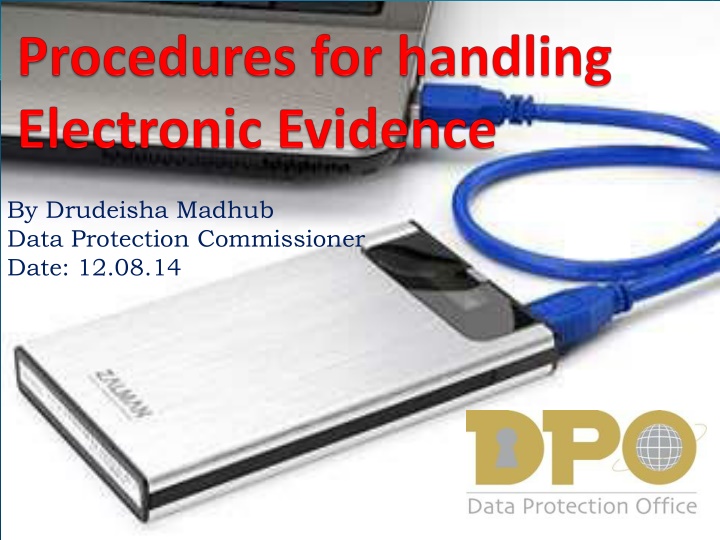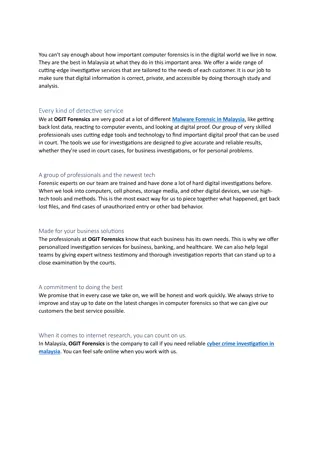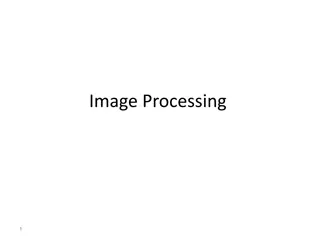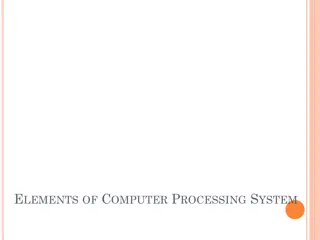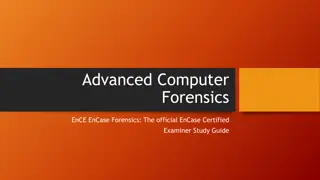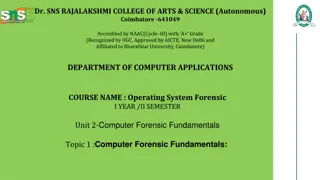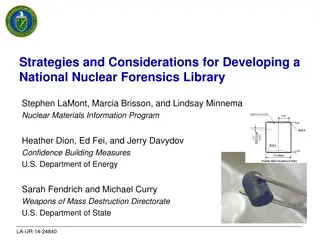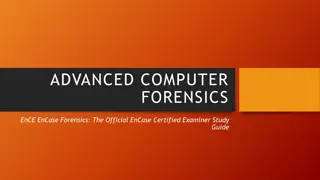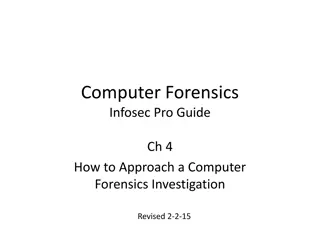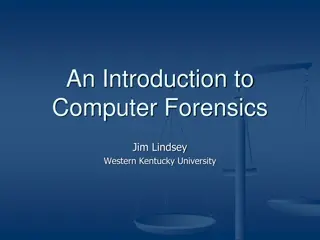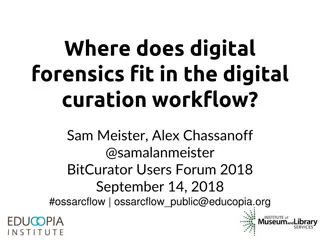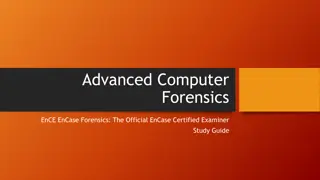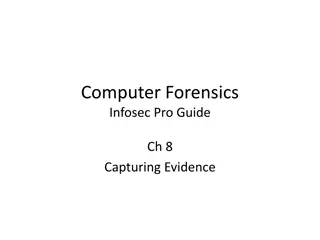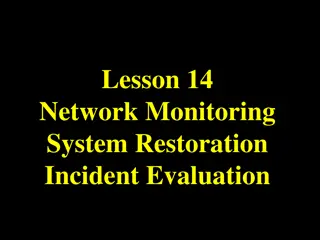Digital Evidence Processing and Computer Forensics Overview
Discover the importance of electronic evidence in high-tech investigations, the principles guiding its handling, and the step-by-step process involved in processing digital evidence. Learn about the critical role of trained personnel and the need for ongoing training in the dynamic field of computer forensics.
Download Presentation

Please find below an Image/Link to download the presentation.
The content on the website is provided AS IS for your information and personal use only. It may not be sold, licensed, or shared on other websites without obtaining consent from the author.If you encounter any issues during the download, it is possible that the publisher has removed the file from their server.
You are allowed to download the files provided on this website for personal or commercial use, subject to the condition that they are used lawfully. All files are the property of their respective owners.
The content on the website is provided AS IS for your information and personal use only. It may not be sold, licensed, or shared on other websites without obtaining consent from the author.
E N D
Presentation Transcript
By Drudeisha Madhub Data Protection Commissioner Date: 12.08.14
Electronic Evidence Electronic Evidence requires Using high technology to investigate. Investigating high technology crimes. Creating a digital evidence forensic unit. Presenting digital evidence in the courtroom.
Electronic Evidence When dealing with digital evidence, the following general forensic and procedural principles should be applied: Actions taken to secure and collect digital evidence should not affect the integrity of that evidence. Persons conducting an examination of digital evidence should be trained for that purpose. Activity relating to the seizure, examination, storage, or transfer of digital evidence should be documented, preserved, and available for review. Through all of this, the examiner should be cognisant of the need to conduct an accurate and impartial examination of the digital evidence.
How is digital evidence processed? Assessment. Computer forensic examiners should assess digital evidence thoroughly with respect to the scope of the case to determine the course of action to take. 1. Acquisition. Digital evidence, by its very nature, is fragile and can be altered, damaged, or destroyed by improper handling or examination. Examination is best conducted on a copy of the original evidence. The original evidence should be acquired in a manner that protects and preserves the integrity of the evidence. 2.
How is digital evidence processed? 3. Examination The purpose of the examination process is to extract and analyze digital evidence. Extraction refers to the recovery of data from its media. Analysis refers to the interpretation of the recovered data and putting it in a logical and useful format. 4. Documentation and reporting. Actions and observations should be documented throughout the forensic processing of evidence. This will conclude with the preparation of a written report of the findings.
Training of Personnel Computer forensics as a discipline demands: Specially trained personnel, Support from management, The necessary funding to keep a unit operating and Ongoing training plan due to the dynamic nature of the IT field
Partnering with other institutions The Data Protection Office is partnering with its Canadian Counterpart to assist the office in setting up a forensic lab. We rely on the council of Europe for guidance and training in Mauritius. The Action plan has already been scheduled to take all stakeholders on board i.e the Judiciary and Enforcement Departments.
Evidence handling and retention Guidelines are being established for receiving, processing, documenting, and handling evidence and work products associated with the examination. Note: Evidence identified as contraband, such as child pornography, may require special consideration, such as obtaining specific contraband-related seizure and search warrants. It is important to remember that other forensic disciplines might be able to recover other evidence, such as fingerprints on the hard drive, hair or fibers in the keyboard, and handwritten disk labels or printed material. In these instances, procedures should be developed to determine the order and manner in which examinations should be performed to reap full evidentiary value.
Case Processing Standard operating procedures (SOPs) are being developed for preserving and processing digital evidence. SOPs should be general enough to address the basic steps in a routine forensic examination while providing flexibility to respond to unique circumstances arising from unforeseen situations.
Developing technical procedures Identifying the task or problem. Proposing possible solutions. Testing each solution on a known control sample. Evaluating the results of the test. Finalising the procedure.
Onsite considerations Consider safety of personnel at the scene. Always ensure the scene is properly secured before and during the search.
Onsite considerations In some cases, the examiner may only have the opportunity to do the following while onsite: Identify the number and type of computers. Determine if a network is present. Interview the system administrator and users. Identify and document the types and volume of media, including removable media. Document the location from which the media was removed.
Onsite considerations Identify offsite storage areas and/or remote computing locations. Identify proprietary software. Evaluate general conditions of the site. Determine the operating system in question.
Onsite considerations Whenever circumstances require an onsite examination to be conducted, attempt should be made to control the environment. Assessment considerations might include the following: The time needed onsite to accomplish evidence recovery. Logistic and personnel concerns associated with long- term deployment. The impact on the business due to a lengthy search. The suitability of equipment, resources, media, training, and experience for an onsite examination.
Onsite considerations If evidence is located that was not authorised in the original search authority, determine what additional legal process may be necessary to continue the search (e.g., warrant, amended consent form). Contact legal advisors for assistance if needed.
